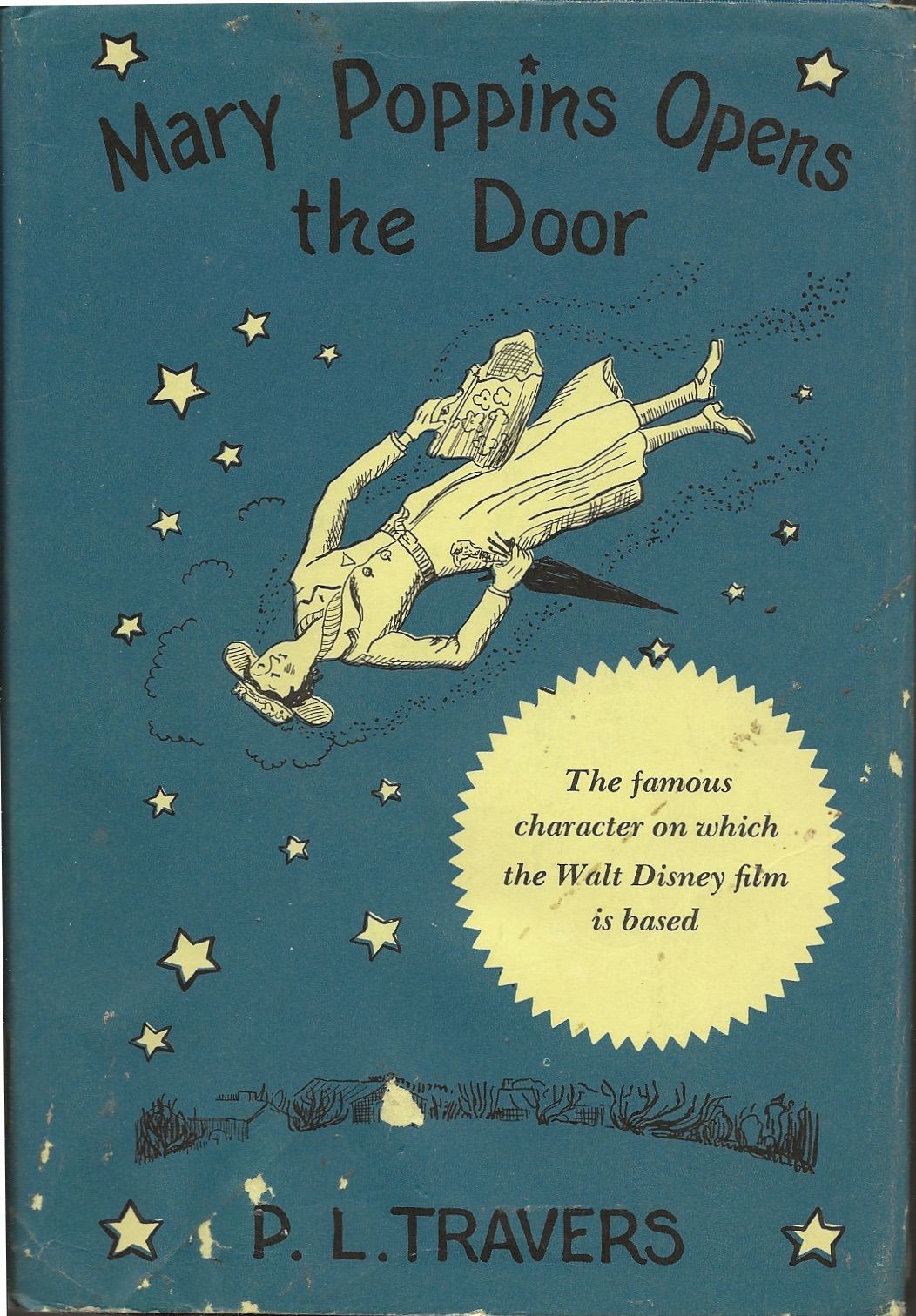Book Review: Mary Poppins Opens the Door by P.L. Travers
It is the Fifth of November (remember, remember) and a foggy day in London town. The fog is particularly thick in the Banks household, where things have gone from Bad to Worse since Mary Poppins left the second time. Indeed, it’s so thick that chronically fatigued manservant Robertson Ay has dressed Mr. Banks with one brown shoe and one black shoe! The rest of the household is similarly out of sync, and the children are disappointed that it appears there will be no fireworks this year.

But then the Sweep appears and gives each member of the household, and especially the oldest children Jane and Michael, a handshake. As you very well know, the chimneysweep’s handshake brings good luck. And things do start going a bit better, with the weather clearing up by the time the Sweep finishes all the chimneys in the house, and a lovely clear sky by dusk. The Sweep takes the children and the fireworks to the Park, where they are joined by the Keeper and Bert the Matchman.
The final rocket fired by the children appears to be a dud, with no explosion. But then they spot a darkess against the sky, a small object gently floating down. It’s Mary Poppins, who had a Return Ticket. She’s just as bossy as ever, but now that she’s returned to be the nurse for the Banks family, everything will turn out right.
The Banks children worry that Mary Poppins will leave them again soon, and she promises to stay until “the other door” opens. There is only one door in the nursery, so that seems safe enough, but this is one of those books where the title spoils the ending.
This is the third and final book chronologically in the eight-book Mary Poppins series (the remaining five take place between events in the first three). It was written during World War Two and published in 1943. Thus the American edition had an introduction by Ms. Travers explaining what the Fifth of November was, and that there were of course no bonfires or fireworks for Guy Fawkes Day in the present time, but she hoped that English children would one day be able to celebrate properly again. Also, some of the illustrations by series artist Mary Shepard had gone missing while crossing the Atlantic Ocean, so substitutes were created by American artist Agnes Sims.
Once again, each chapter is in effect its own short story. The Banks children meet another of Mary Poppins’ eccentric relatives, this one musically inclined, hear another fairy tale about a king who learns better, meet a living statue, ride peppermint horses, go under the sea, and dance with fairy tale characters during the Crack between the Old and New Years.
Mary Poppins continues to be stern and rather conceited, and impresses on the children that they’re not to talk to their parents about the magical adventures they have, but by the end does soften a bit as the evidence piles up that Jane and Michael aren’t just imagining things. (Mr. and Mrs. Banks continue never to be around when anything magical happens, even if the entire rest of the neighborhood is.)
Although she’s stayed with the Banks family for over a year this time, come early spring, a change in atmosphere is felt. Characters who’d appeared in previous books and stories return to give Mary Poppins gifts and wish her farewell, and finally Jane and Michael realize those other people aren’t leaving, their nanny is! They witness one last bit of magic as Mary Poppins opens the Other Door, but they don’t entirely mourn as the Banks family has finally taken to heart the lessons Mary had to teach.
While the Mary Poppins series is about the magic of childhood and shelved as children’s books, P.L. Travers claimed she didn’t write them for children, per se. You can see glimpses of this here and there throughout the books as there are things that will go above children’s heads and like Peter Pan before her, Mary Poppins is far weirder and more dangerous than the Disney movie would lead you to believe.
Despite this, these are still books that children very much enjoy (the younger ones may need help with some of the dated references and customs.) Recommended to fantasy fans.

